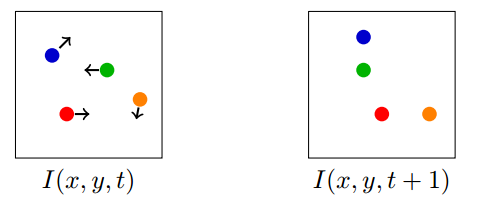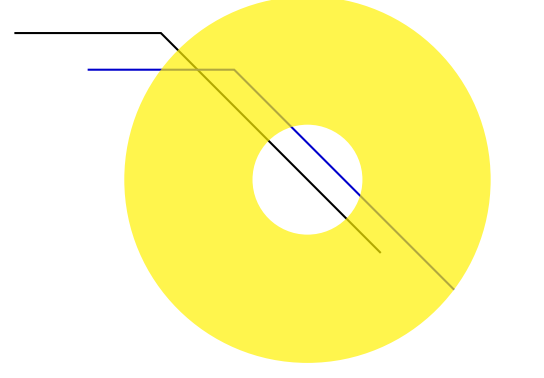Motion Estimation
The motion estimation techniques fall into two categories:
1. Feature-Based Methods
Extract visual features (corners, textured areas) and track them over multiple frames
Sparse motion fields, but more robust tracking
Suitable when image motion is large (10s of pixels)
We have seen much of this method in Feature Recognition.
2. Direct, Dense Methods
- Directly recover image motion at each pixel from spatio-temporal image brightness variantions
- Dense motion fields, but sensitive to appearance variations.
- Suitable for video and when image motion is small.
2.1 Optic Flow
Optic flow is the apparent motion of objects or surfaces.

2.1.1 Problem Definition
How to estimate pixel motion from image to
- Given a pixel in , look for nearby pixels of the same color in

2.1.2 Assumptions
- Color Constancy: a point in looks the same in . For grayscale images, this is brightness constancy.
- Small Motion: points do not move very far
Taylor series expansion of : Combining these two constraints together:
2.2.3 Brightness Constancy Constraint Equation
2 unknowns but 1 equation!
What does this constraint mean?
- The component of the flow in the gradient direction is determined
- The component of the flow parallel to an edge is unknown
Aperture problem

2.2 Smooth Optical Flow
How much we violate motion brightness equation?
2.2.1 Formulate Error in Optical Flow Constraint
- Global Error Function
- Smoothness constraint: Motion field tends to vary smoothly over the image. This punishes large changes to over the image.
Combining both constraint, find at each image point that minimizes:
2.3 Dense Flow Summary
- Impose a constraint on the flow field in general to make the problem solvable
- Strength: Allow you to bias your solution with a prior
- But there are better ways to increase the number of equations.